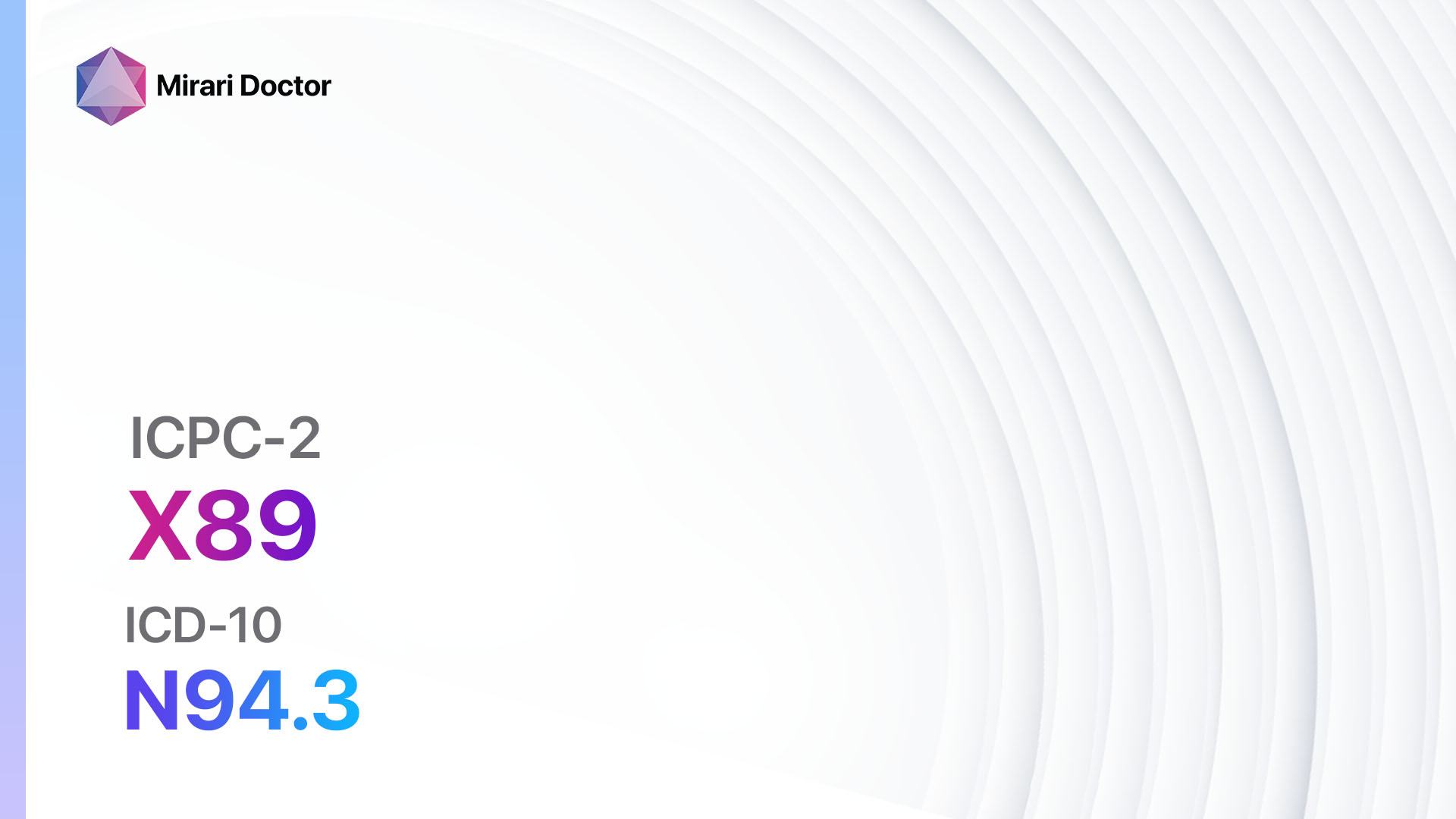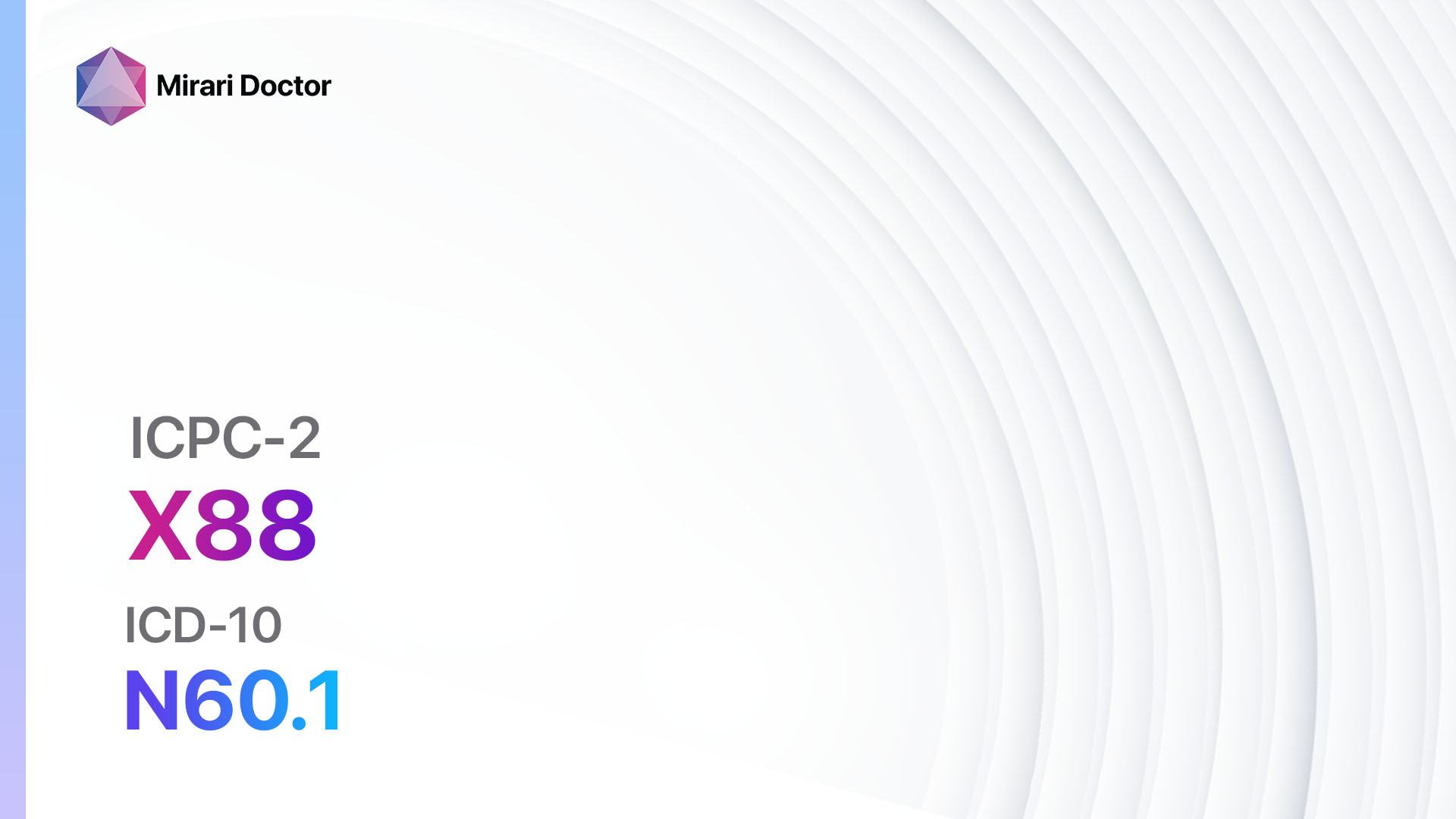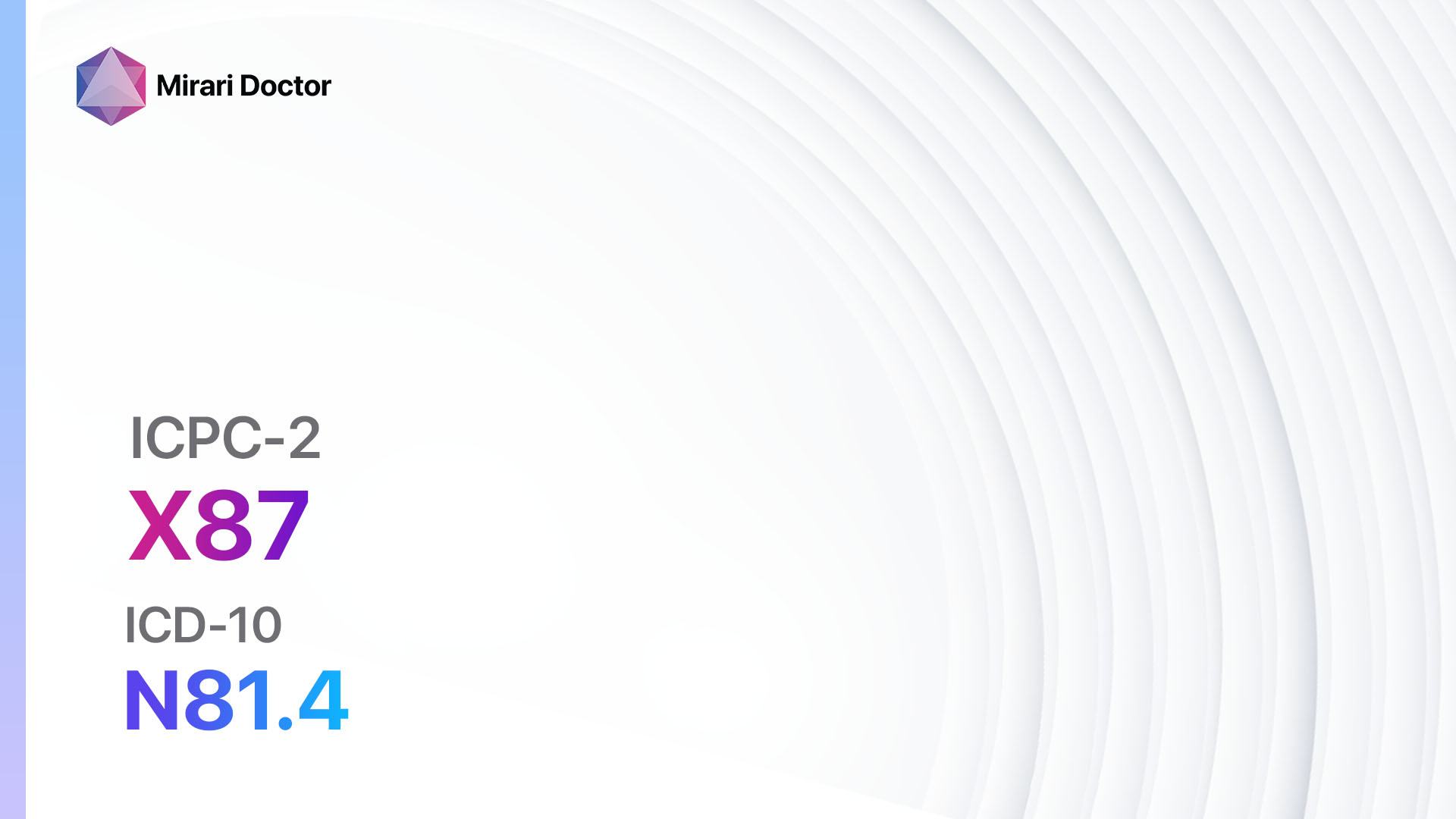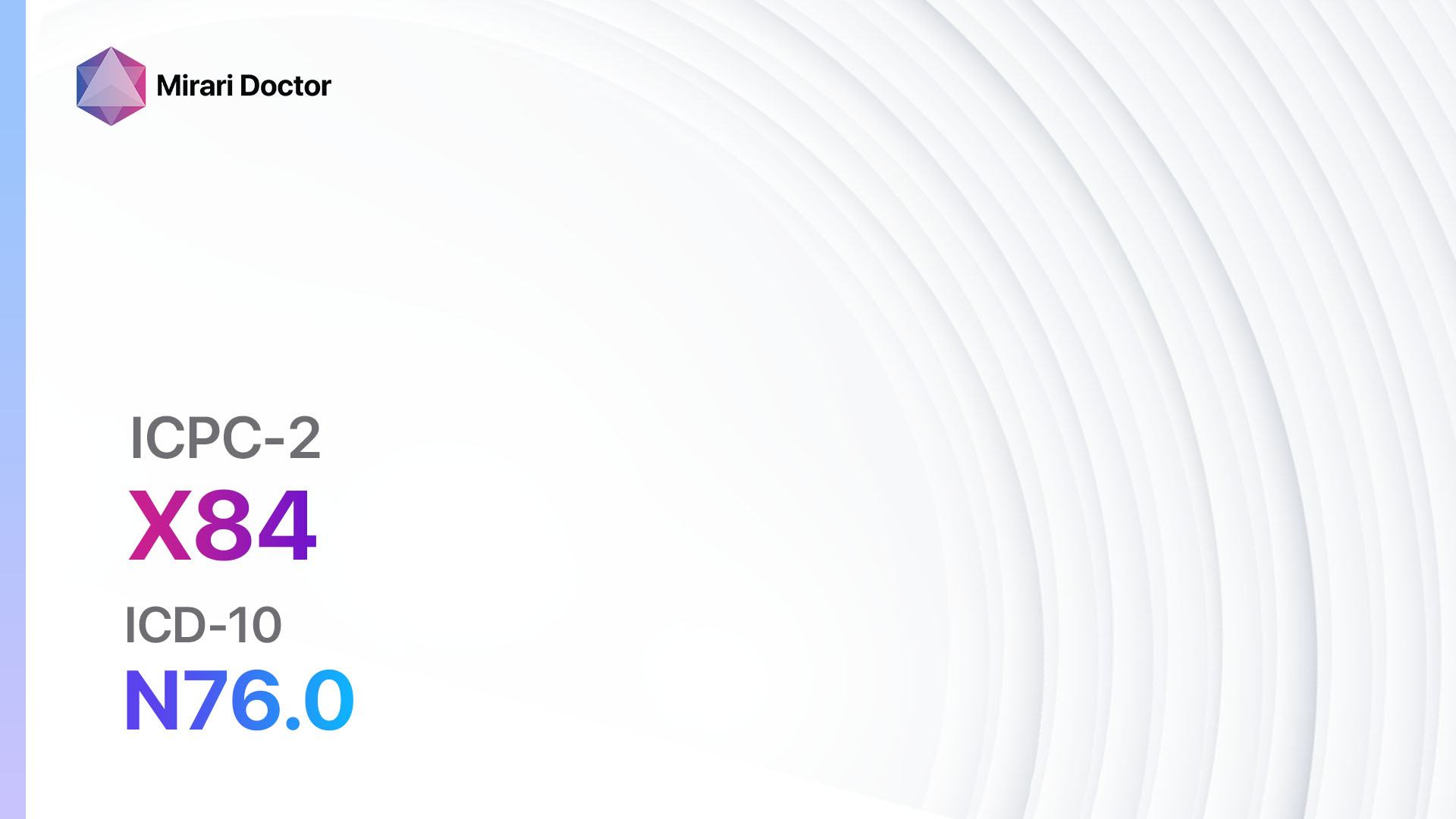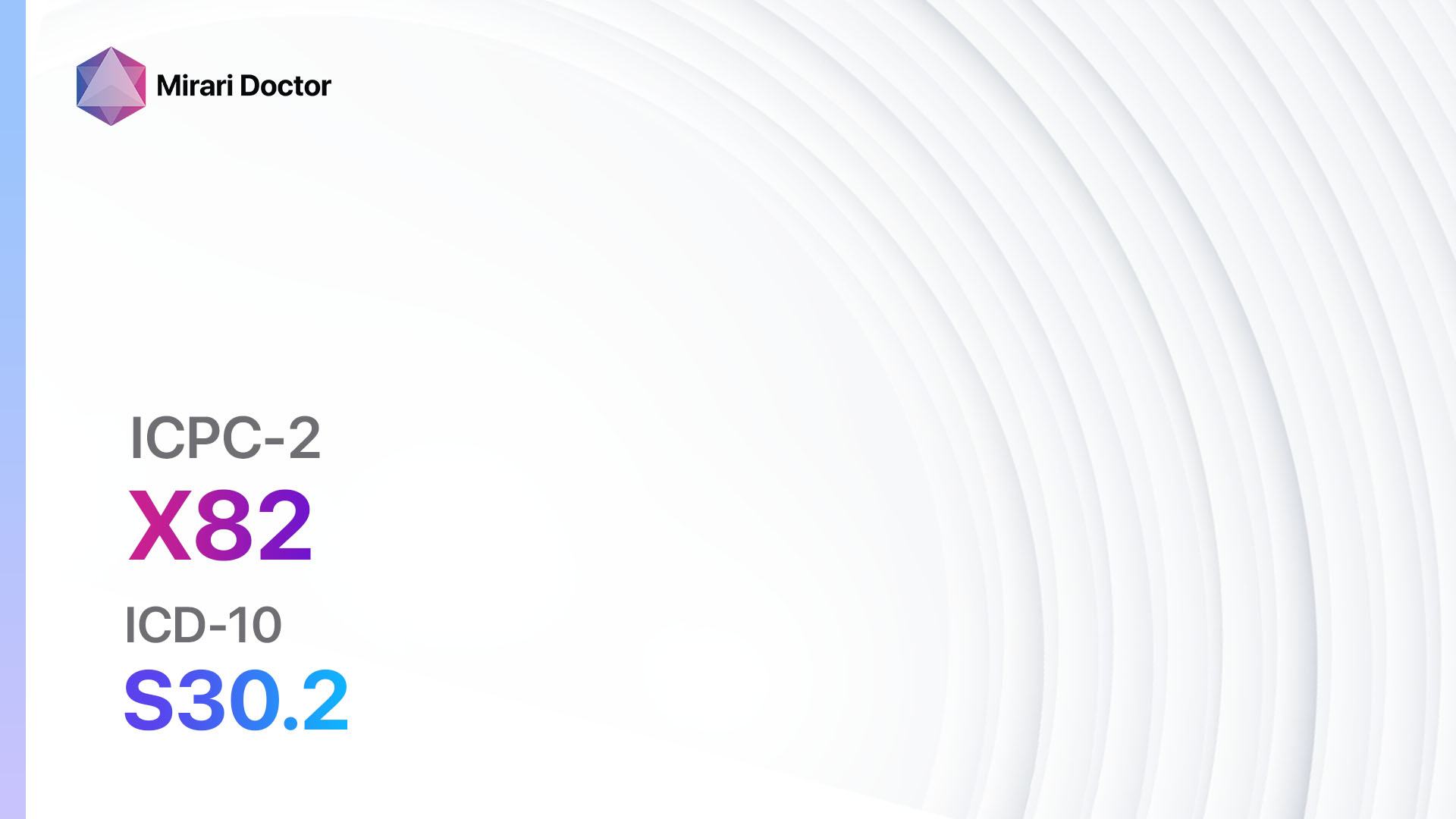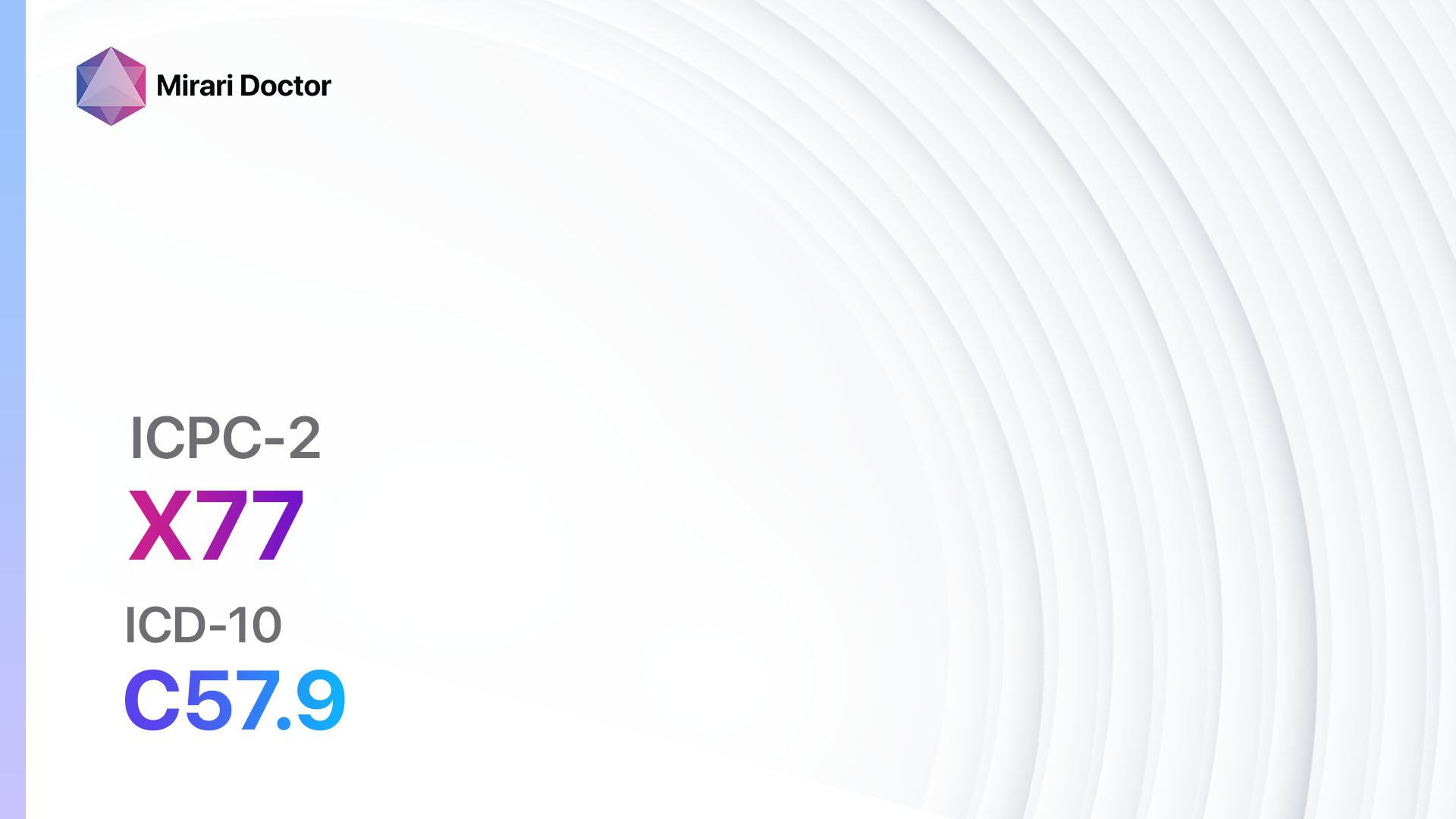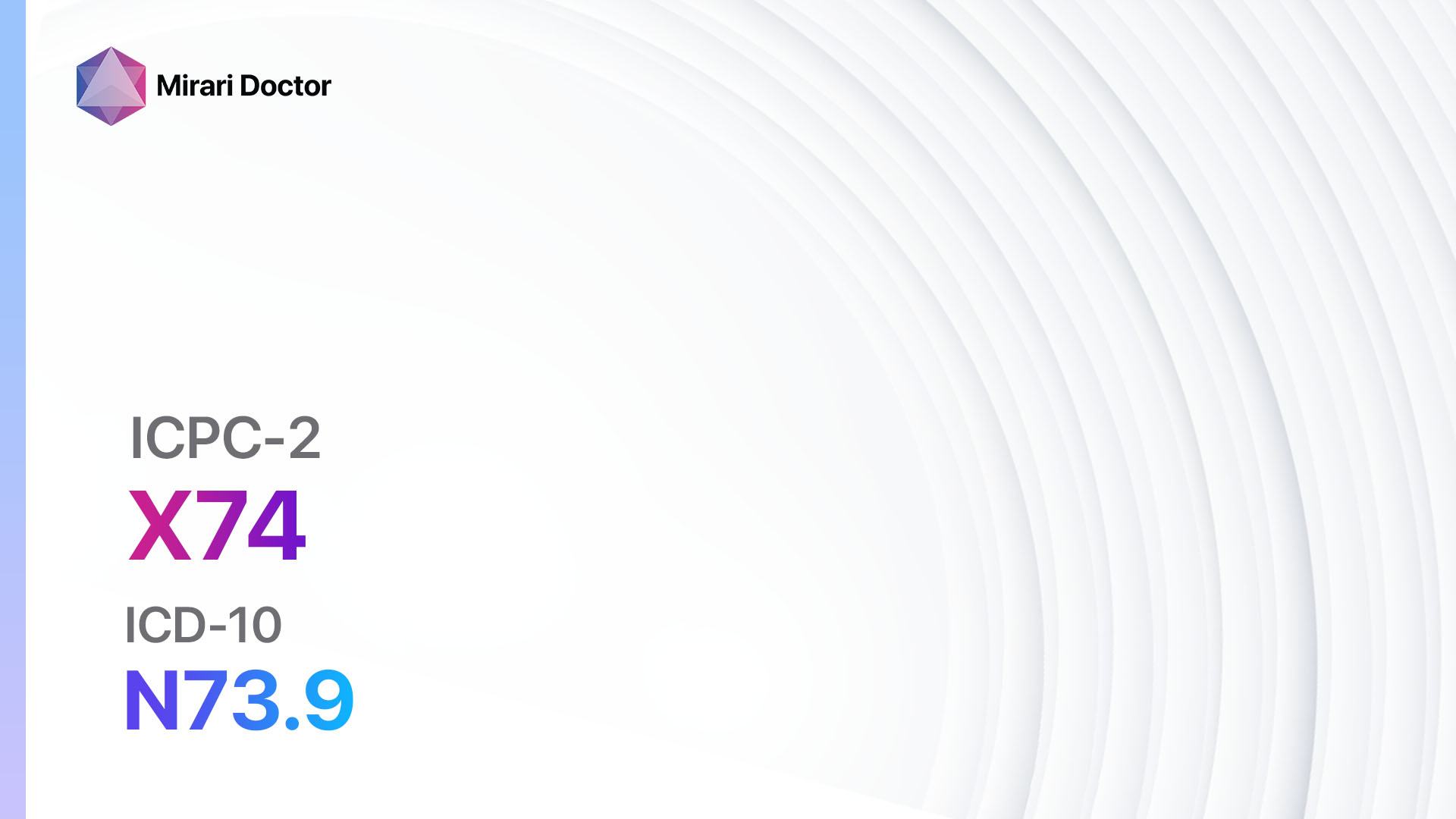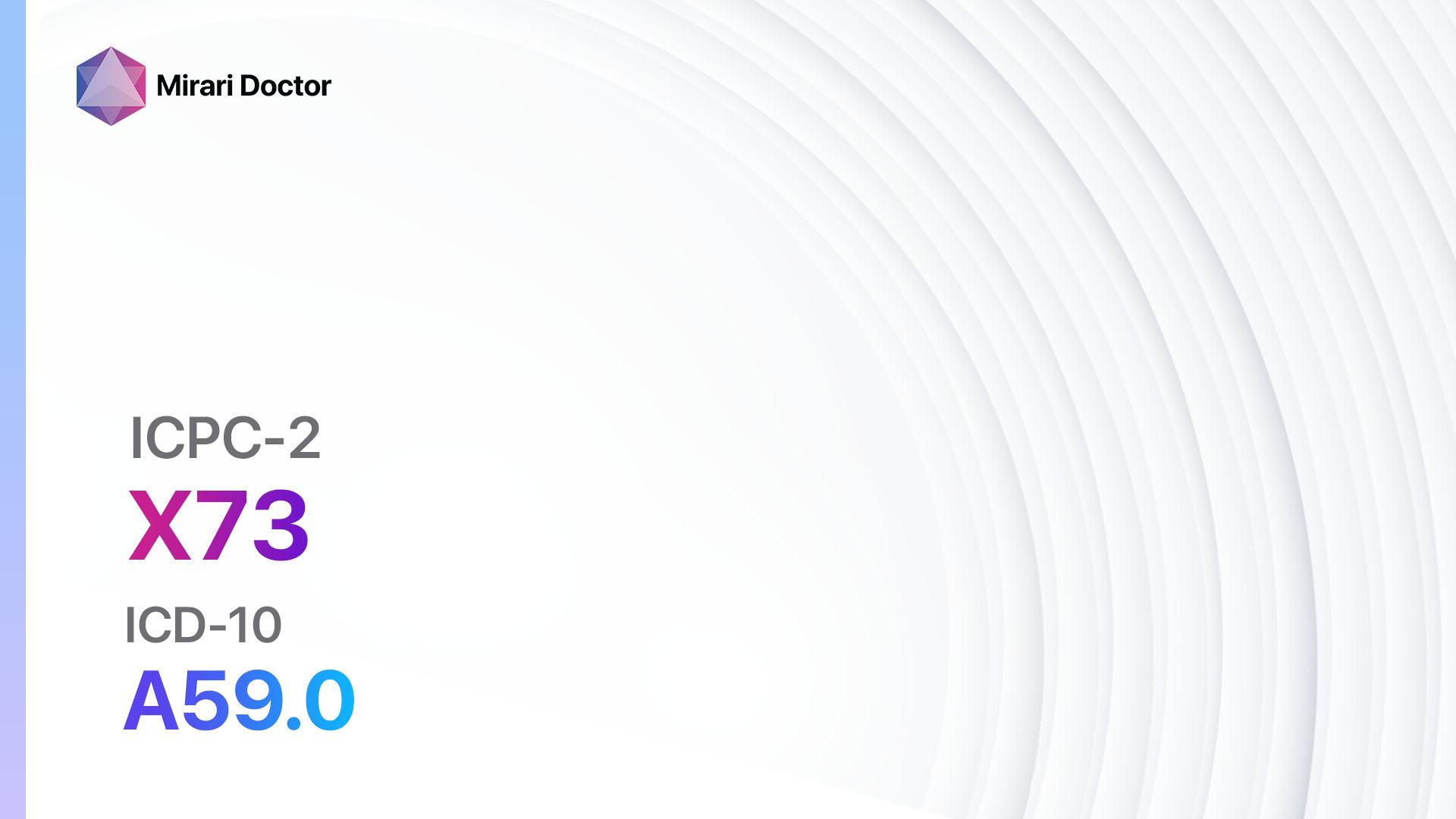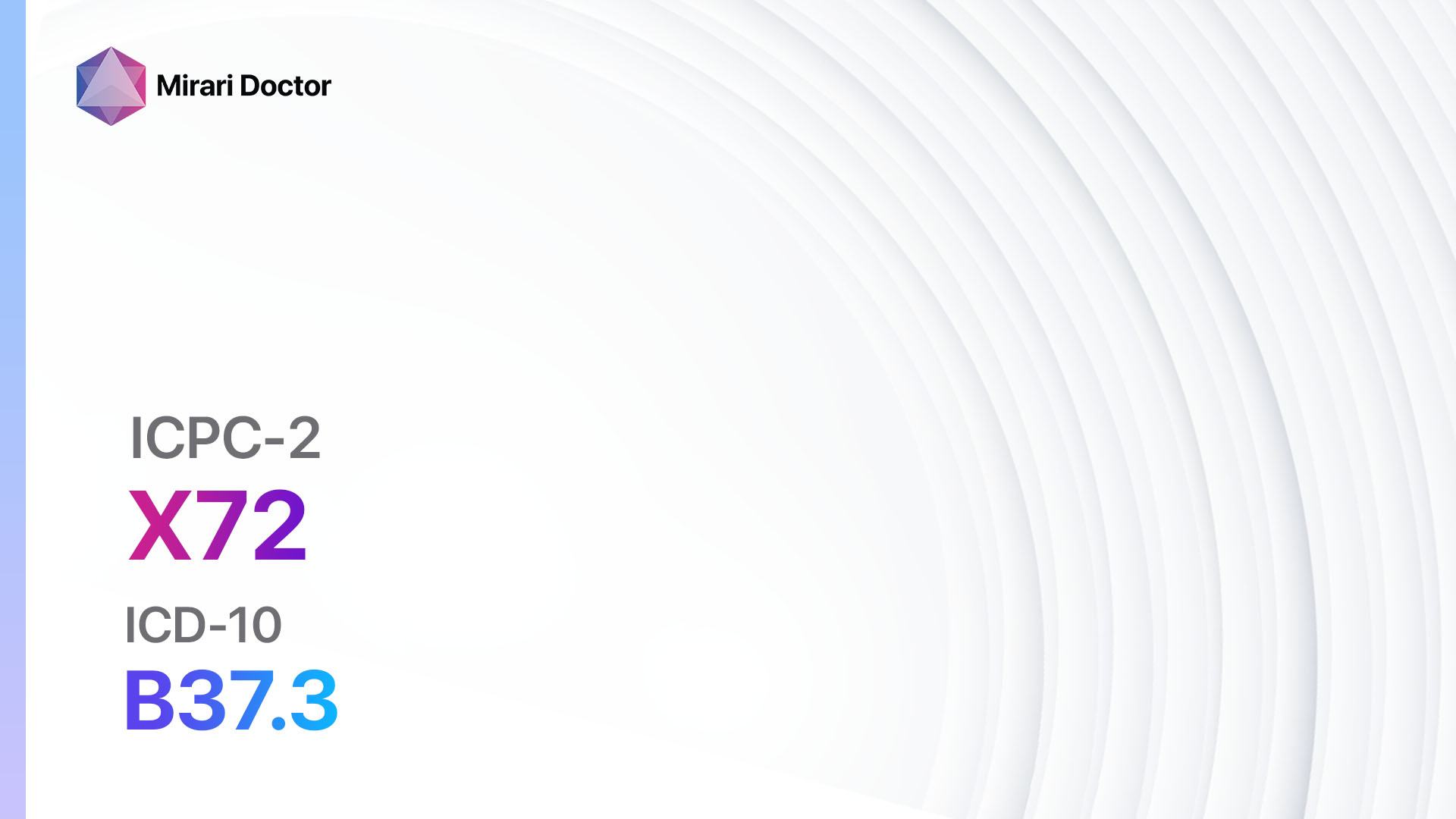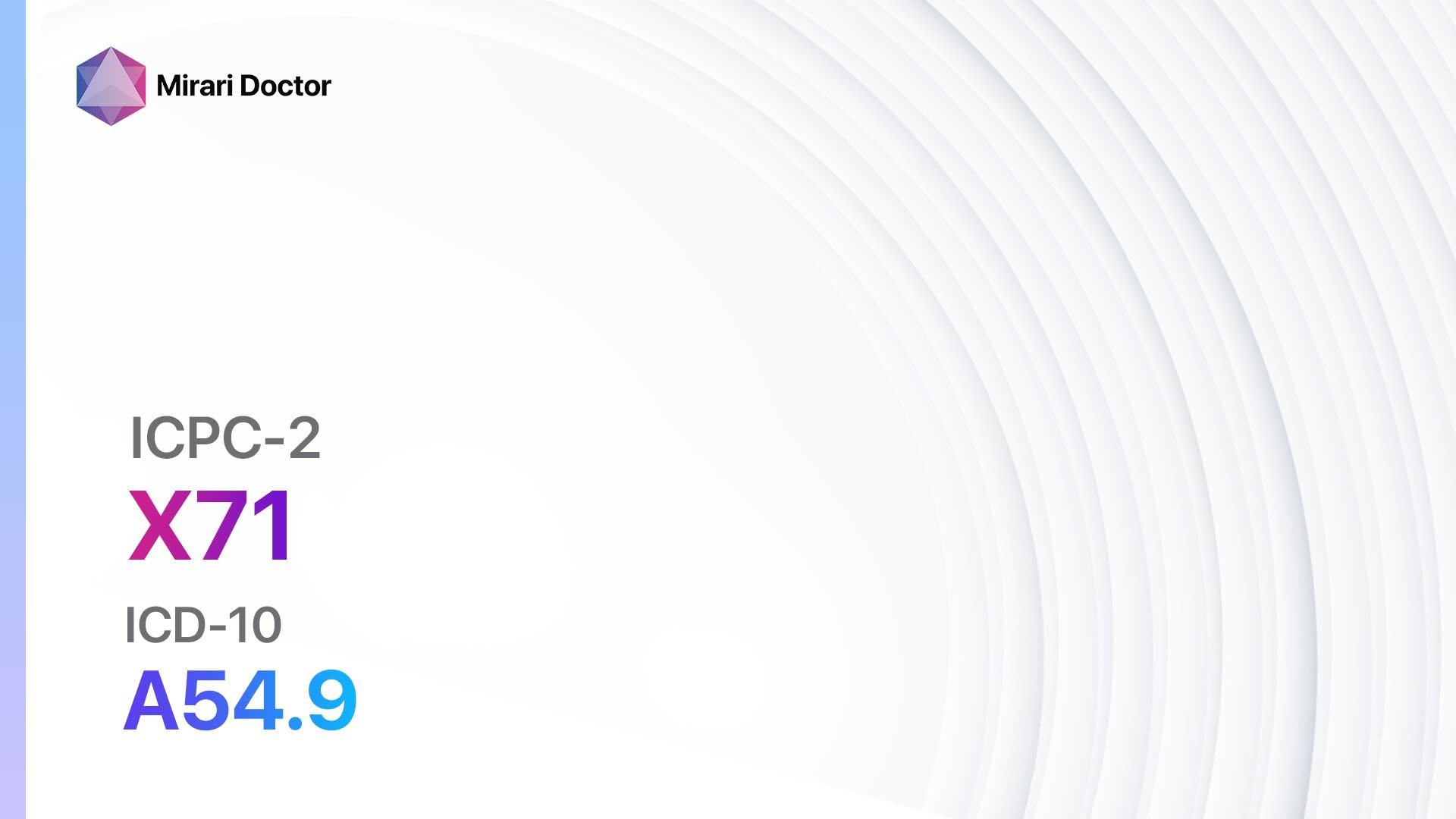
Introduction
Pelvic symptoms or complaints in females can be indicative of various underlying conditions. These symptoms can range from mild discomfort to severe pain and may be associated with other symptoms such as abnormal bleeding or urinary issues[1]. It is important to properly diagnose and manage these symptoms to provide appropriate treatment and improve the patient’s quality of life.
The aim of this guide is to provide a comprehensive overview of the diagnostic steps, possible interventions, and lifestyle modifications that can be considered for females presenting with pelvic symptoms or complaints.
Codes
Symptoms
- Pelvic pain: This can range from mild to severe and may be constant or intermittent.
- Abnormal vaginal bleeding: This includes heavy or prolonged menstrual bleeding, bleeding between periods, or postmenopausal bleeding.
- Urinary symptoms: These may include frequent urination, urgency, pain or discomfort during urination, or blood in the urine.
- Bowel symptoms: These may include changes in bowel habits, such as diarrhea or constipation, or the presence of blood in the stool.
- Sexual dysfunction: This may include pain during intercourse or decreased libido[4].
Causes
- Gynecological conditions: These include conditions such as endometriosis, uterine fibroids, ovarian cysts, pelvic inflammatory disease (PID), or cervical or uterine cancer.
- Urinary tract conditions: These include conditions such as urinary tract infections (UTIs), interstitial cystitis, or bladder or kidney stones.
- Gastrointestinal conditions: These include conditions such as irritable bowel syndrome (IBS), inflammatory bowel disease (IBD), or colorectal cancer.
- Musculoskeletal conditions: These include conditions such as pelvic floor dysfunction or muscle spasms.
- Psychological factors: Stress, anxiety, or depression can contribute to or exacerbate pelvic symptoms[5].
Diagnostic Steps
Medical History
- Gather information about the patient’s symptoms, including the duration, severity, and any associated factors.
- Ask about the patient’s menstrual history, including the regularity of periods and any changes in bleeding patterns.
- Inquire about the presence of any urinary or bowel symptoms.
- Assess the patient’s sexual history and any associated symptoms.
- Determine if the patient has any relevant medical conditions or risk factors[6].
Physical Examination
- Perform a thorough pelvic examination to assess for any abnormalities, such as masses, tenderness, or abnormal discharge.
- Evaluate the patient’s abdominal region for any signs of distension or tenderness.
- Palpate the lower back and hips to assess for any musculoskeletal abnormalities.
- Perform a digital rectal examination to assess the rectum and pelvic floor muscles.
- Conduct a neurological examination to assess for any sensory or motor deficits[7].
Laboratory Tests
- Complete blood count (CBC): To assess for any signs of infection or anemia.
- Urinalysis: To check for the presence of blood, infection, or other abnormalities in the urine.
- Hormone levels: To evaluate hormonal imbalances that may be contributing to the symptoms.
- Tumor markers: To screen for the presence of certain cancers, such as ovarian or cervical cancer.
- Sexually transmitted infection (STI) testing: To rule out any STIs that may be causing the symptoms[8].
Diagnostic Imaging
- Transvaginal ultrasound: To visualize the pelvic organs and assess for any abnormalities, such as cysts or fibroids.
- Magnetic resonance imaging (MRI): To obtain detailed images of the pelvic region and assess for any structural abnormalities or tumors.
- Computed tomography (CT) scan: To evaluate the pelvic organs and surrounding structures in more detail.
- X-ray: To assess for any bony abnormalities or fractures that may be contributing to the symptoms.
- Cystoscopy or colonoscopy: To visualize the bladder or colon, respectively, and assess for any abnormalities or signs of inflammation[9].
Other Tests
- Endometrial biopsy: To obtain a sample of the uterine lining for further evaluation, particularly in cases of abnormal bleeding.
- Pelvic floor muscle assessment: To assess the strength and function of the pelvic floor muscles, particularly in cases of pelvic floor dysfunction.
- Psychological assessment: To evaluate for any underlying psychological factors that may be contributing to the symptoms[10].
Follow-up and Patient Education
- Schedule a follow-up appointment to discuss the results of the diagnostic tests and determine the appropriate course of treatment.
- Provide the patient with educational materials or resources related to their specific condition or symptoms.
- Encourage the patient to ask questions and address any concerns they may have.
- Discuss the importance of regular follow-up appointments and adherence to the recommended treatment plan.
Possible Interventions
Traditional Interventions
Medications:
Top 5 drugs for Pelvic symptoms/complaints in females:
- Nonsteroidal anti-inflammatory drugs (NSAIDs) (e.g., Ibuprofen, Naproxen):
- Cost: Generic versions can be $3-$20/month.
- Contraindications: Active gastrointestinal bleeding, history of allergic reactions to NSAIDs.
- Side effects: Upset stomach, heartburn, dizziness.
- Severe side effects: Gastrointestinal bleeding, kidney problems.
- Drug interactions: Blood thinners, certain antidepressants.
- Warning: Long-term use may increase the risk of cardiovascular events.
- Hormonal contraceptives (e.g., Combined oral contraceptives, Progestin-only pills):
- Cost: Varies depending on the specific contraceptive and insurance coverage.
- Contraindications: History of blood clots, certain types of cancer, uncontrolled high blood pressure.
- Side effects: Nausea, breast tenderness, irregular bleeding.
- Severe side effects: Blood clots, stroke, heart attack.
- Drug interactions: Certain antibiotics, antifungal medications.
- Warning: Regular follow-up appointments and monitoring of blood pressure may be required.
- Antibiotics (e.g., Ciprofloxacin, Metronidazole):
- Cost: Generic versions can be $4-$30/month.
- Contraindications: Known allergies to antibiotics, certain medical conditions.
- Side effects: Upset stomach, diarrhea, yeast infections.
- Severe side effects: Severe allergic reactions, tendon rupture.
- Drug interactions: Certain blood thinners, antacids.
- Warning: Complete the full course of antibiotics as prescribed.
- Antidepressants (e.g., Selective serotonin reuptake inhibitors, Tricyclic antidepressants):
- Cost: Generic versions can be $4-$30/month.
- Contraindications: Allergy to the specific antidepressant, recent use of MAO inhibitors.
- Side effects: Nausea, drowsiness, sexual dysfunction.
- Severe side effects: Serotonin syndrome, suicidal thoughts.
- Drug interactions: Other antidepressants, certain pain medications.
- Warning: Regular follow-up appointments and monitoring for any changes in mood or behavior.
- Antispasmodics (e.g., Dicyclomine, Hyoscyamine):
- Cost: Generic versions can be $4-$30/month.
- Contraindications: Glaucoma, urinary retention, certain gastrointestinal conditions.
- Side effects: Dry mouth, blurred vision, constipation.
- Severe side effects: Increased heart rate, difficulty urinating.
- Drug interactions: Other anticholinergic medications, certain antidepressants.
- Warning: Avoid alcohol and activities requiring mental alertness while taking antispasmodics.
Alternative Drugs:
- Selective estrogen receptor modulators (e.g., Tamoxifen): Used for the treatment of certain gynecological conditions, such as endometriosis.
- Antifungal medications (e.g., Fluconazole): Used to treat fungal infections that may be contributing to the symptoms.
- Antianxiety medications (e.g., Benzodiazepines): Used to manage anxiety or stress-related symptoms.
- Muscle relaxants (e.g., Cyclobenzaprine): Used to relieve muscle spasms or tension in the pelvic region.
- Antidepressant/antianxiety combinations (e.g., Duloxetine): Used for the treatment of chronic pain associated with certain gynecological conditions.
Surgical Procedures:
- Laparoscopy: A minimally invasive surgical procedure used to visualize and treat certain gynecological conditions, such as endometriosis or ovarian cysts. Cost: $5,000 to $15,000.
- Hysterectomy: Surgical removal of the uterus, often performed to treat conditions such as uterine fibroids or certain types of cancer. Cost: $10,000 to $20,000.
Alternative Interventions
- Acupuncture: May help alleviate pelvic pain and improve overall well-being. Cost: $60-$120 per session.
- Physical therapy: Can help strengthen the pelvic floor muscles and improve symptoms related to pelvic floor dysfunction. Cost: $100-$200 per session.
- Mind-body techniques: Such as relaxation exercises, meditation, or yoga, can help reduce stress and improve overall well-being. Cost: Varies depending on the specific technique or class.
- Herbal supplements: Some herbs, such as chasteberry or black cohosh, may have potential benefits for managing certain gynecological symptoms. Cost: Varies depending on the specific supplement.
- Pelvic floor biofeedback: A technique that uses sensors to provide feedback on pelvic floor muscle function and help improve muscle coordination. Cost: $100-$200 per session.
Lifestyle Interventions
- Dietary modifications: Encourage a balanced diet rich in fruits, vegetables, whole grains, and lean proteins. Avoiding trigger foods, such as caffeine or spicy foods, may also help alleviate symptoms. Cost: Varies depending on individual food choices.
- Regular exercise: Engaging in regular physical activity, such as walking, swimming, or yoga, can help improve overall well-being and reduce pelvic symptoms. Cost: Varies depending on the chosen activity.
- Stress management: Encourage stress-reducing techniques, such as deep breathing exercises, mindfulness, or engaging in hobbies or activities that promote relaxation. Cost: Varies depending on the chosen technique or activity.
- Pelvic floor exercises: Teach the patient how to perform pelvic floor muscle exercises, such as Kegels, to improve muscle strength and function. Cost: Free.
- Heat therapy: Applying a heating pad or taking warm baths can help alleviate pelvic pain and muscle tension. Cost: Varies depending on the chosen method of heat therapy.
It is important to note that the cost ranges provided are approximate and may vary depending on the location and availability of the interventions. It is recommended to consult with healthcare professionals or insurance providers for more accurate cost estimates.
Mirari Cold Plasma Alternative Intervention
Understanding Mirari Cold Plasma
- Safe and Non-Invasive Treatment: Mirari Cold Plasma is a safe and non-invasive treatment option for various skin conditions. It does not require incisions, minimizing the risk of scarring, bleeding, or tissue damage.
- Efficient Extraction of Foreign Bodies: Mirari Cold Plasma facilitates the removal of foreign bodies from the skin by degrading and dissociating organic matter, allowing easier access and extraction.
- Pain Reduction and Comfort: Mirari Cold Plasma has a local analgesic effect, providing pain relief during the treatment, making it more comfortable for the patient.
- Reduced Risk of Infection: Mirari Cold Plasma has antimicrobial properties, effectively killing bacteria and reducing the risk of infection.
- Accelerated Healing and Minimal Scarring: Mirari Cold Plasma stimulates wound healing and tissue regeneration, reducing healing time and minimizing the formation of scars.
Mirari Cold Plasma Prescription
Video instructions for using Mirari Cold Plasma Device – X17 Pelvis symptom/complaint female (ICD-10:R10.2)
| Mild | Moderate | Severe |
| Mode setting: 1 (Infection) Location: 0 (Localized) Morning: 15 minutes, Evening: 15 minutes |
Mode setting: 1 (Infection) Location: 0 (Localized) Morning: 30 minutes, Lunch: 30 minutes, Evening: 30 minutes |
Mode setting: 1 (Infection) Location: 0 (Localized) Morning: 30 minutes, Lunch: 30 minutes, Evening: 30 minutes |
| Mode setting: 2 (Wound Healing) Location: 0 (Localized) Morning: 15 minutes, Evening: 15 minutes |
Mode setting: 2 (Wound Healing) Location: 0 (Localized) Morning: 30 minutes, Lunch: 30 minutes, Evening: 30 minutes |
Mode setting: 2 (Wound Healing) Location: 0 (Localized) Morning: 30 minutes, Lunch: 30 minutes, Evening: 30 minutes |
| Mode setting: 3 (Antiviral Therapy) Location: 0 (Localized) Morning: 15 minutes, Evening: 15 minutes |
Mode setting: 3 (Antiviral Therapy) Location: 0 (Localized) Morning: 30 minutes, Lunch: 30 minutes, Evening: 30 minutes |
Mode setting: 3 (Antiviral Therapy) Location: 0 (Localized) Morning: 30 minutes, Lunch: 30 minutes, Evening: 30 minutes |
| Total Morning: 45 minutes approx. $7.50 USD, Evening: 45 minutes approx. $7.50 USD |
Total Morning: 90 minutes approx. $15 USD, Lunch: 90 minutes approx. $15 USD, Evening: 90 minutes approx. $15 USD, |
Total Morning: 90 minutes approx. $15 USD, Lunch: 90 minutes approx. $15 USD, Evening: 90 minutes approx. $15 USD, |
| Usual treatment for 7-60 days approx. $105 USD – $900 USD | Usual treatment for 6-8 weeks approx. $1,890 USD – $2,520 USD |
Usual treatment for 3-6 months approx. $4,050 USD – $8,100 USD
|
 |
|
Use the Mirari Cold Plasma device to treat Pelvis symptom/complaint female effectively.
WARNING: MIRARI COLD PLASMA IS DESIGNED FOR THE HUMAN BODY WITHOUT ANY ARTIFICIAL OR THIRD PARTY PRODUCTS. USE OF OTHER PRODUCTS IN COMBINATION WITH MIRARI COLD PLASMA MAY CAUSE UNPREDICTABLE EFFECTS, HARM OR INJURY. PLEASE CONSULT A MEDICAL PROFESSIONAL BEFORE COMBINING ANY OTHER PRODUCTS WITH USE OF MIRARI.
Step 1: Cleanse the Skin
- Start by cleaning the affected area of the skin with a gentle cleanser or mild soap and water. Gently pat the area dry with a clean towel.
Step 2: Prepare the Mirari Cold Plasma device
- Ensure that the Mirari Cold Plasma device is fully charged or has fresh batteries as per the manufacturer’s instructions. Make sure the device is clean and in good working condition.
- Switch on the Mirari device using the power button or by following the specific instructions provided with the device.
- Some Mirari devices may have adjustable settings for intensity or treatment duration. Follow the manufacturer’s instructions to select the appropriate settings based on your needs and the recommended guidelines.
Step 3: Apply the Device
- Place the Mirari device in direct contact with the affected area of the skin. Gently glide or hold the device over the skin surface, ensuring even coverage of the area experiencing.
- Slowly move the Mirari device in a circular motion or follow a specific pattern as indicated in the user manual. This helps ensure thorough treatment coverage.
Step 4: Monitor and Assess:
- Keep track of your progress and evaluate the effectiveness of the Mirari device in managing your Pelvis symptom/complaint female. If you have any concerns or notice any adverse reactions, consult with your health care professional.
Note
This guide is for informational purposes only and should not replace the advice of a medical professional. Always consult with your healthcare provider or a qualified medical professional for personal advice, diagnosis, or treatment. Do not solely rely on the information presented here for decisions about your health. Use of this information is at your own risk. The authors of this guide, nor any associated entities or platforms, are not responsible for any potential adverse effects or outcomes based on the content.
Mirari Cold Plasma System Disclaimer
- Purpose: The Mirari Cold Plasma System is a Class 2 medical device designed for use by trained healthcare professionals. It is registered for use in Thailand and Vietnam. It is not intended for use outside of these locations.
- Informational Use: The content and information provided with the device are for educational and informational purposes only. They are not a substitute for professional medical advice or care.
- Variable Outcomes: While the device is approved for specific uses, individual outcomes can differ. We do not assert or guarantee specific medical outcomes.
- Consultation: Prior to utilizing the device or making decisions based on its content, it is essential to consult with a Certified Mirari Tele-Therapist and your medical healthcare provider regarding specific protocols.
- Liability: By using this device, users are acknowledging and accepting all potential risks. Neither the manufacturer nor the distributor will be held accountable for any adverse reactions, injuries, or damages stemming from its use.
- Geographical Availability: This device has received approval for designated purposes by the Thai and Vietnam FDA. As of now, outside of Thailand and Vietnam, the Mirari Cold Plasma System is not available for purchase or use.
References
- MSD Manuals. (n.d.). Female Pelvic Pain – Gynecology and Obstetrics. Retrieved from https://www.msdmanuals.com/professional/gynecology-and-obstetrics/symptoms-of-gynecologic-disorders/female-pelvic-pain
- WONCA International Classification Committee. (2005). ICPC-2: International Classification of Primary Care. Oxford University Press.
- ICD10Data.com. (2024). 2024 ICD-10-CM Diagnosis Code R10.2: Pelvic and perineal pain. Retrieved from https://www.icd10data.com/ICD10CM/Codes/R00-R99/R10-R19/R10-/R10.2
- WebMD. (n.d.). Pelvic Pain: Causes, Symptoms, Diagnosis, Treatment. Retrieved from https://www.webmd.com/pain-management/pelvic-pain
- Mayo Clinic. (2024). Chronic pelvic pain – Diagnosis and treatment. Retrieved from https://www.mayoclinic.org/diseases-conditions/chronic-pelvic-pain/diagnosis-treatment/drc-20354371
- Cleveland Clinic. (n.d.). Pelvic Pain: Causes, Symptoms, Treatment & Relief. Retrieved from https://my.clevelandclinic.org/health/symptoms/12106-pelvic-pain
- Rocker, I. (Ed.). (2012). Pelvic Pain in Women: Diagnosis and Management. Springer London.
- StatPearls. (n.d.). Chronic Pelvic Pain. Retrieved from https://www.ncbi.nlm.nih.gov/books/NBK554585/
- Mayo Clinic. (n.d.). Pelvic pain – Diagnosis and treatment. Retrieved from https://www.mayoclinic.org/diseases-conditions/pelvic-pain/diagnosis-treatment/drc-20376288
- American College of Obstetricians and Gynecologists. (2020). Chronic Pelvic Pain: ACOG Practice Bulletin, Number 218. Obstetrics & Gynecology, 135(3), e98-e109.
Related articles
Made in USA



